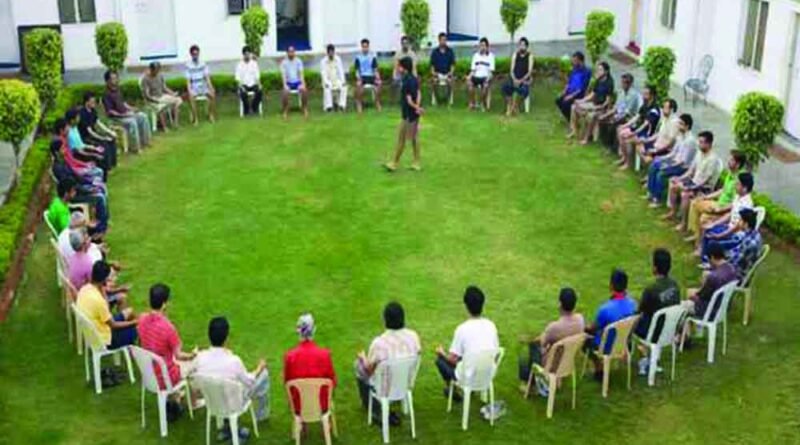More youth falling in the trap of drugs
After raising the spectre of horror in Punjab, the menace of drug abuse is haunting Himachal but the infra facilities needed to fight it are missing
The menace of drugs supply, which initially started from Punjab as a smuggling transit point from the ‘Golden Crescent’ (Afghanistan, Iran and Pakistan) to Europe, first engulfed the State and later spread to the neighbouring Himachal Pradesh. Due to the inability of law-enforcement agencies to control the illegality, all kinds of drugs are being smuggled into Himachal from Punjab. Compounding the matters, drug peddling from the ‘Eastern Golden Triangle’ (Myanmar, Laos and Thailand) is also thriving simultaneously.
According to a recent report, the prevalence of psychotropic drugs (heroin, charas, ganja, chitta, opioids etc) across the region is roughly three to four times the national average, affecting most youth in the 15-30 age category. In Himachal, 5,972 persons including 44 foreigners have been arrested in 4,514 cases under the NDPS Act from 2019 to 2021. The gravity can be gauged from the Drug Prevention Helpline data, which was launched on January 6, 2022, and is managed jointly by the HP State Mental Health Authority (HPSMHA) and Nasha Nivaran Board. The data indicates that the use of multiple drugs is on the rise and 40 per cent of calls received were related to multiple substance abuse.
In the last four months, 101 calls were received on the helpline, which included 67 calls for help regarding addicts, of which 28 were related to multiple drug users, 15 alcoholic, 13 opioid users, 10 cannabis and one pharma drug while 34 were for queries and information. The maximum cases were from the districts of Solan, followed by Kangra and Mandi. The main reasons for drug abuse were easy availability of drugs, peer pressure, inquisitiveness to try something new and non-cordial relations with family. The problems were more acute in families where there was no elder member to look after the family.
In the face of inept handling of the situation by the administration, the issue of operating de-addiction centres without requisite facilities in Punjab’s border areas is serious. A case in point is the recent incident where 19 inmates fled a rehabilitation centre at Bir Plassi village in Nalagarh after thrashing the staff. Since running such centres in Punjab is a costly affair, several such centres have come up in Himachal’s border areas. Although agencies like HPSMHA have laid down norms for operating such centres, the Rehabilitation Council of India has prescribed the minimum standards for infrastructure and manpower and WHO has recommended treatment protocols, but all rules and regulations are still being violated with impunity.
As per norms, these centres should have at least 75-100 sq ft area per person, facility for sports, yoga and meditation, qualified staff and psychiatrists on call. Actually, however, these centres are operational in substandard rented premises having space constraints, and all the above-mentioned facilities are missing. The patients, most of them hailing from Punjab, fail to get the promised care. Majority of these centres have obtained licences as ‘Rehabilitation Centres’ and not ‘Substance Used Drug Treatment Centres’. As per rules, they are not allowed to take in drug addicts, but they do it to make easy money. There is the general tendency in groups of influential, well-connected people with political patronage coming together to register a society and start such centres without bothering to follow the norms or appointing required specialists.
In 2017, the State Government had constituted the HPSMHA to deal with this problem and made the registration of de-addiction centres mandatory. After receiving complaints of human rights violation, the Authority has taken action against eight de-addiction centres in Una district. Six of these centres have been issued notices and the licences of the other two have not been renewed.
At present, there are 76 private de-addiction and rehabilitation centres operating in Himachal Pradesh with a total capacity of about 2,500 beds. As per Section 20(1) and (2) of the Mental Health Care Act, 2017, the patients admitted to these centres have the right to protection from cruel, inhuman and degrading treatment. Unfortunately, in many cases, the family members of drug addicts lose patience and without understanding their real problems send them to the rehabilitation centres. They should get the psychiatry evaluation of the addicts done before deciding to send them to these centres. All six medical colleges in Himachal have a psychiatry department and acute withdrawal symptoms leading to body cramps, irritation and aggressive behaviour should be dealt with under the supervision of trained doctors.
We should understand the background of a person who is drawn into the trap of drugs. Generally, they are ignored or misguided people coming from difficult families. The family members should share quality time and maintain constant communication with one another. As they say, “Prevention is better than cure”. The families, schools, colleges, social and cultural organisations should step forward to sensitise the masses, especially the youth, to live a purposeful and content life so that they don’t fall into the trap of drugs. We should have regular counselling for youth and their parents.
Sports should be made compulsory in schools and colleges. The youth should be provided gainful employment and must be fruitfully engaged so that they don’t have time to think of drugs.
(The writer is a senior journalist and Chairman, Panwar Group of Institutions, Solan, Himachal Pradesh. The views expressed are personal.)
Source: The Pioneer




